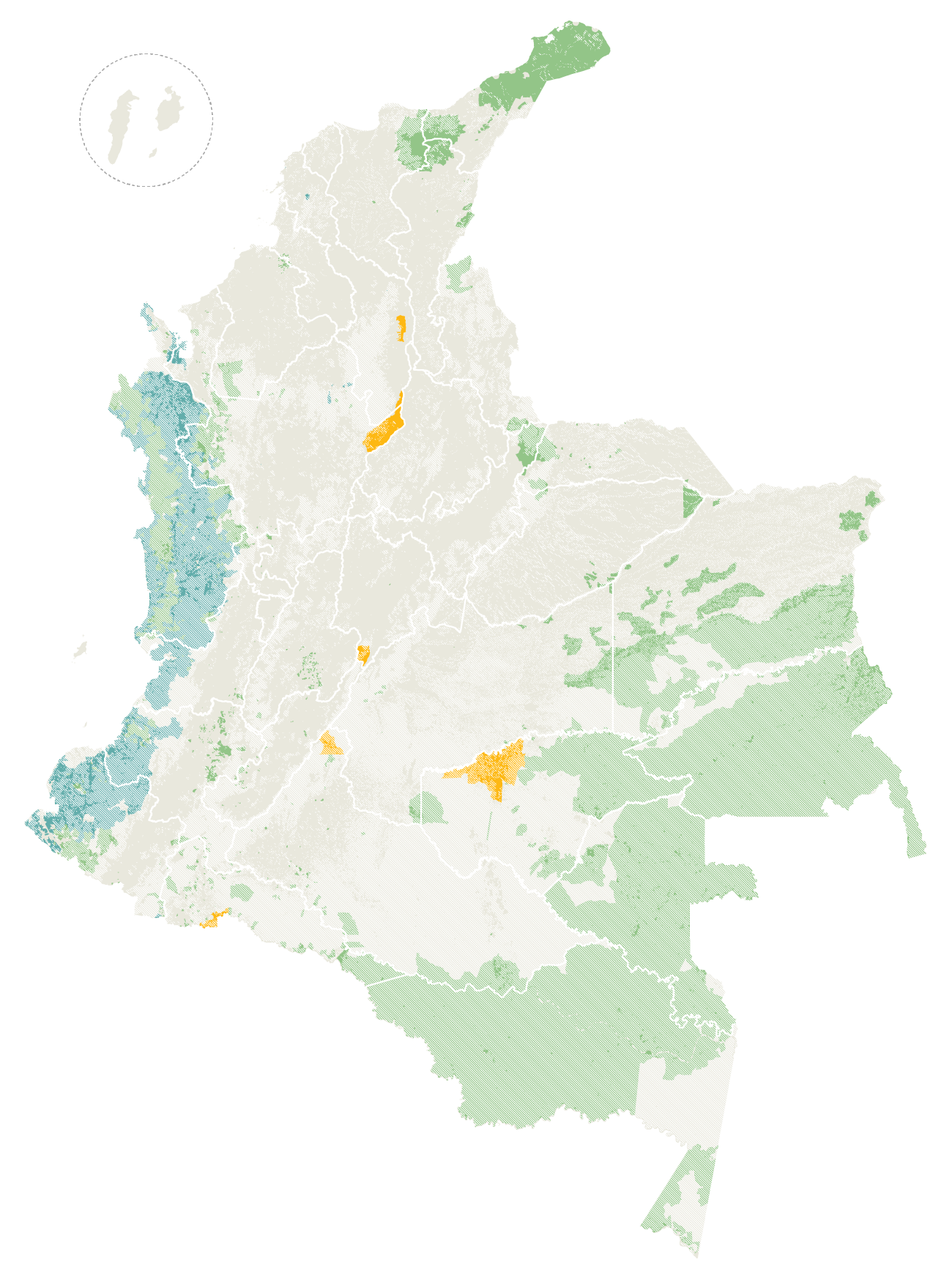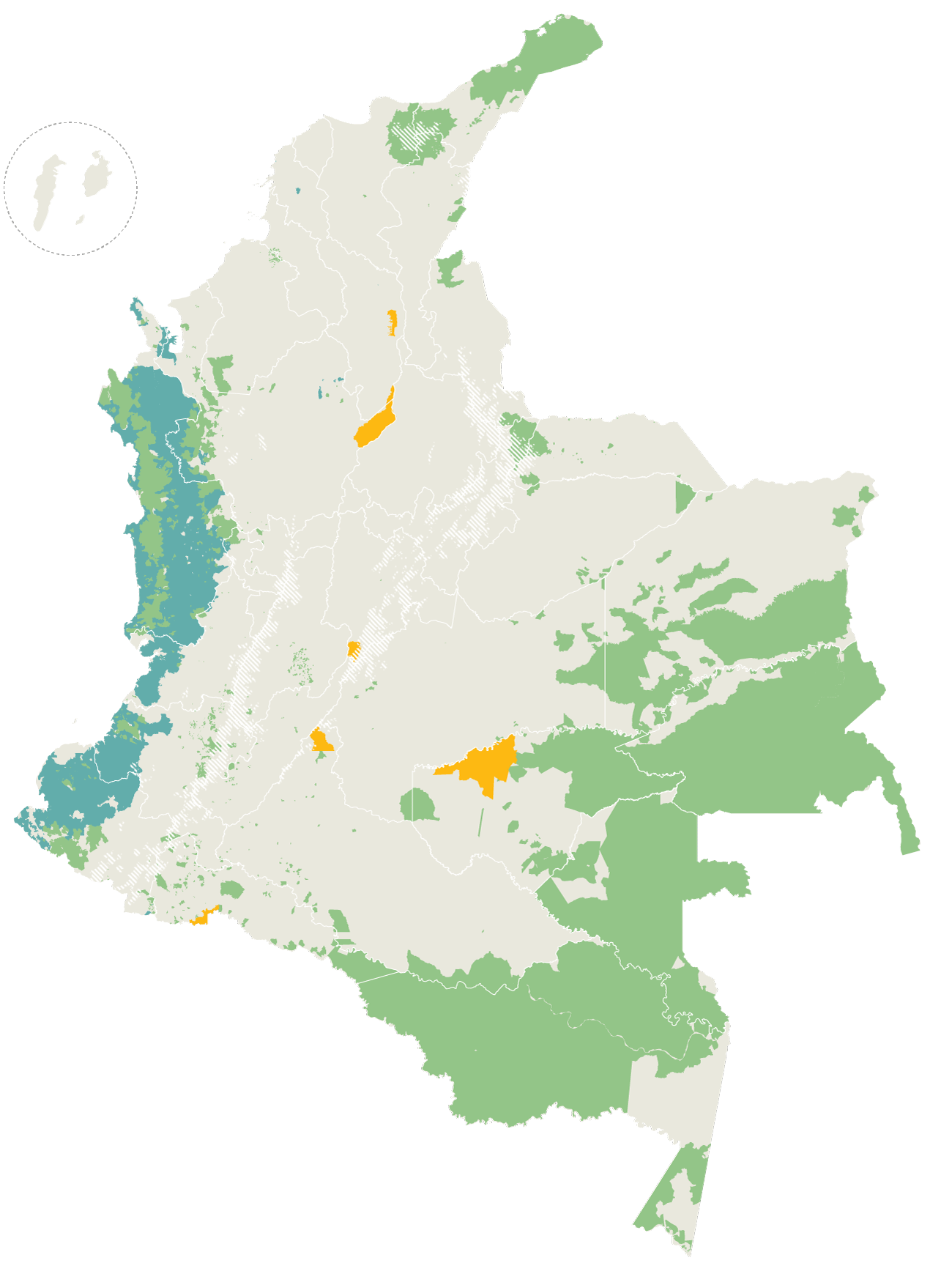406
Collective Territories and Biodiversity
Biological and cultural diversity
Sandra Liliana MosqueraInstituto Alexander von Humboldt Carlos TapiaInstituto Alexander von Humboldt Edwin Fabian Tamayo PeñaInstituto Alexander von HumboldtIndigenous Reserves
696 indigenous reserves in 28 states
32’022.970 ha*

States with greater entitled areas
Amazonas, Guainía, Vaupés and Vichada

Decree
2164 of 1995

Ordering tools
Life and Safeguarding Plans
Community councils of afro-descendant communities
181 community councils in biogeographical Chocó, Antioquia, and the Caribbean
5.502.002 ha*

States with greater entitled areas
Chocó, Nariño and Valle del Cauca

Decree
1745 of 1995

Ordering tools
Management plans of afro-descendant communities and Internal regulations

Decree
1745 of 1995

Ordering tools
Management plans of afro-descendant communities and Internal regulations
Lands for Peasant Communities
1861 zones* in Antioquia, Bolívar, Caquetá, Cundinamarca, Guaviare and Putumayo
851.010 ha*

Decree
1777 of 1996

Plans of sustainable development established by municipal councils
Are not titles of collective property but instead are given as Agricultural Family Units
Source *Incoder, 2015. For the calculation of this information current requests of extension were not taken into account.


